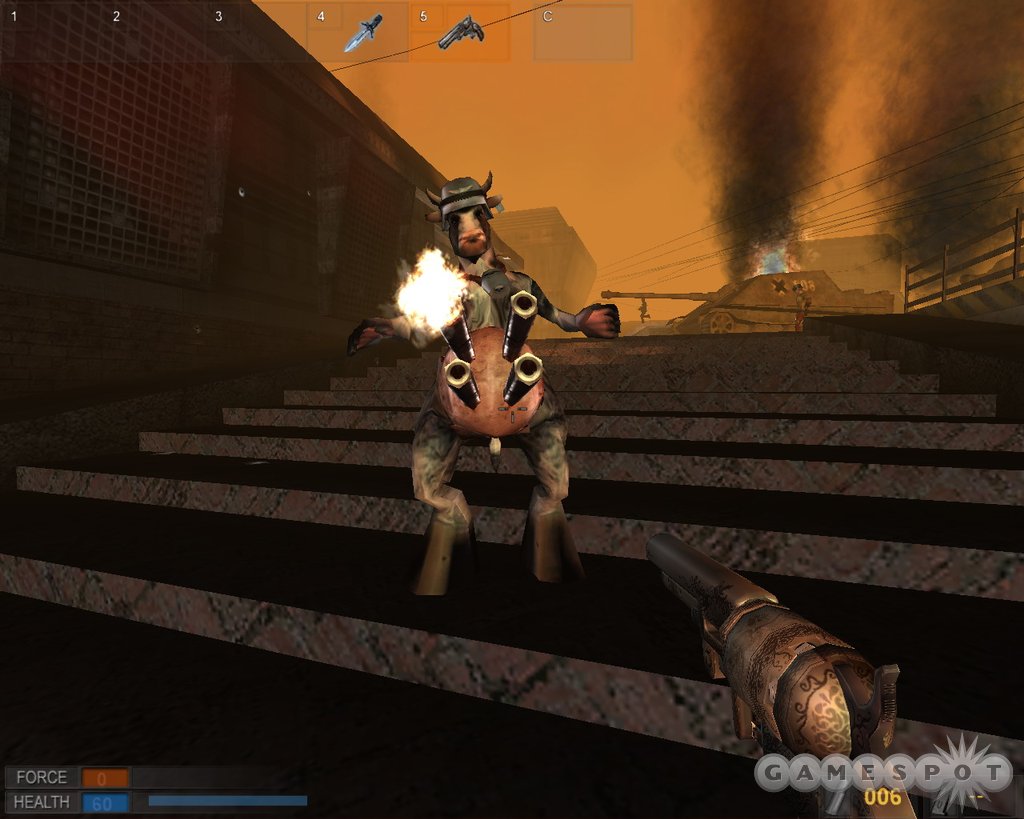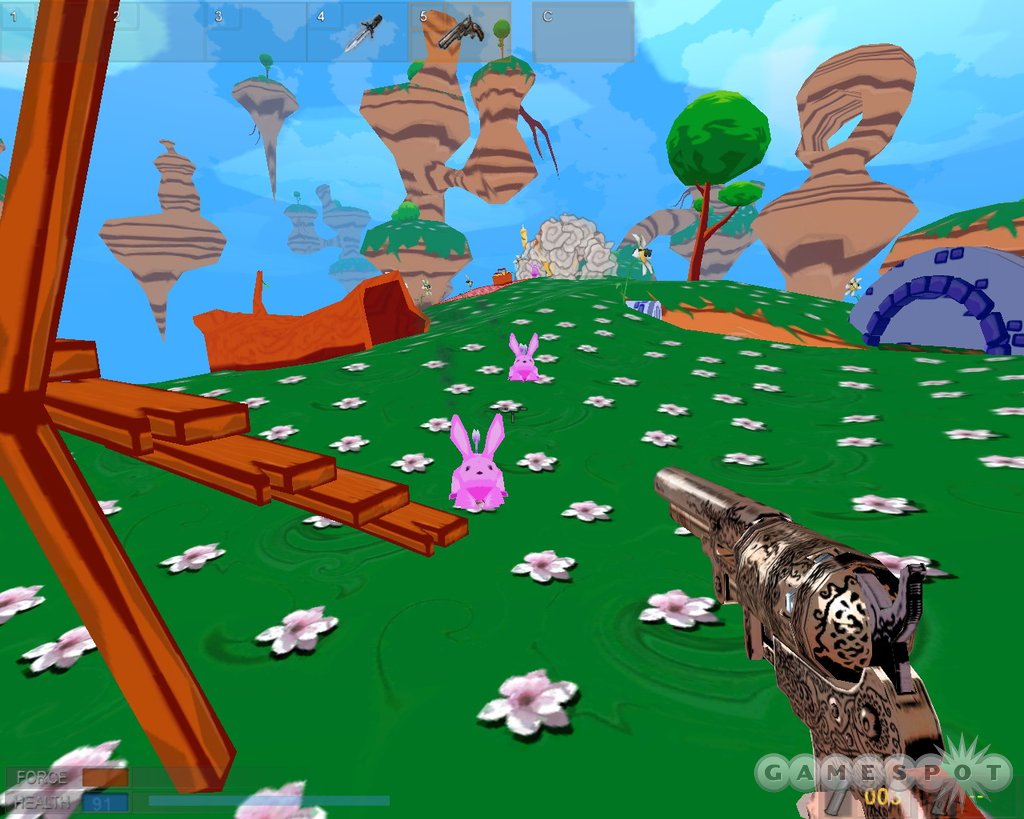It's hard to dislike a game that isn't afraid to include a mission goal that calls for you to "Climb into the deepest depths of your soul." However, this one then doesn't make that mission goal some kind of purgative final encounter or, at the very least, the final task of that particular level. So it's hard to dislike but not impossible to dislike Psychotoxic, a long-in-development shooter from Germany that--despite occasional bursts of endearing "deepest depths of your soul" wackiness--is ruined by sloppy design, bugs, and a desperate need for some editing.
It's 2022, and the Apocalypse is either about to start or has started. The state of Armageddon isn't entirely clear. Regardless, you play Angela Prophet, who, according to one of the game's many misspelled dialogue captions, is the "Choosen One." Because you're half angel, you've been "choosen" to stop both the fourth horseman of the Apocalypse and the self-proclaimed reincarnation of Aleister Crowley, a guy called Aaron who wears a giant cowboy hat and runs a death cult committed to worldwide chaos.
In keeping with the biblical theme, Psychotoxic's bugs--much like the demons living inside the possessed man in Mark 5--are legion. Expect these bugs to corrupt save games on a regular basis. And when the game's good and tuckered out from that, expect it to faint directly to the desktop. Sometimes your weapons will refuse to reload until you cycle through them a couple of times. Other times, Psychotoxic will grind to a two or three frame-per-second halting stutter for the remainder of a level. In one mission, you're wearing a big diving helmet, except when it sporadically disappears. When it's in place, however, your gun is alarmingly inside the helmet with you. So it's kind of a relief when the helmet goes missing. At one point, you're supposed to locate a contact in Central Park. There's a good chance you'll scour the park for hours before accidentally stumbling across the empty bench that triggers the meeting...and the end of the level. Is the missing character model a bug or a design problem? In a game rife with both, that's a real toughie.
On the positive side, when they're working, the quicksave and quickload are truly pretty quick. And for once, a marketing blurb actually understates some of a game's features. When the back of the box claims there are 29 levels, it's being modest. We counted 30. But who's counting? Well, us...and anyone else forced to trudge through the seemingly endless parade of endless levels. In a time when 10-hour, 11- or 12-level shooters have become the standard, Psychotoxic features 30 long missions and maybe 20 hours of gameplay (more depending on how unlucky you get with the game's inherent instability).
Psychotoxic proves that longer is not necessarily better. The design philosophy seems to have been: If climbing two sets of stairs with an enemy on each landing is fun, 10 sets of stairs must be a hundred times better! Most levels consist of cramped, twisty corridors inhabited by enemies standing around waiting for you to shoot them. Enemy artificial intelligence is primitive, and your movement is way too loose, the combination of which makes the combat simultaneously boring and aggravating.
Environments are spread between Washington, DC, New York City, and about 10 dream levels that take place inside people's heads. Some of these dream levels have an interesting look. One takes place in a garish, stylized cartoon world filled with exploding bunnies, and another is set in a gothic village that uses a cinematic monochrome color scheme, complete with squiggly film scratches. They all, however, still suffer from the game's many problems.
In the several places where the designers decided to break format from the twisty corridor crawl, the game tends to get worse. For instance, the first dream level includes lots of platform-jumping and sliding-log avoidance (all while being shot at) that would be frustrating in a first-person shooter with solid controls, much less one with Psychotoxic's "Armageddon on Ice" style of movement. Another mission abruptly introduces an unforgiving stealth requirement that ends up being mostly an annoying matter of luck, since there's no stealth mechanic accompanying it other than a too-brief invisibility power-up.

The environments do occasionally open up, such as in the aforementioned Central Park level, but the frame rate often takes a massive hit because of it. The visuals are powered by a custom rendering engine, and the results are erratic. The frame rate, even on a machine that exceeds the recommended specs, fluctuates wildly...and unpredictably, too, since it sometimes takes a mysterious nosedive even in cramped areas. The character models are basic, and their animation is awful. Characters frequently move by gliding, and they animate in fitful pops and starts, like spooks in Asian ghost movies.
The back of the box claims there are 90 "unique and different" enemies. If that's true, the developer is counting some very subtle variations on a spider, a cop, and a zombie, which comprise about 98 percent of the largely indistinguishable enemies you'll face. One thing's for sure: There aren't 90 voice samples for the monsters. Catchphrases are repeated (including the same one back-to-back-to-back without a break) to the point that they go beyond annoying and wrap around to become sort of funny. That is, until hour 15 sets in, and there are still 10 levels to go...and your save game just got corrupted. Then it reverts to being aggravating, just like the rest of Psychotoxic. Oh, and there's no multiplayer mode, just in case you thought there would be a surprise ending where that part turned out to be good.
